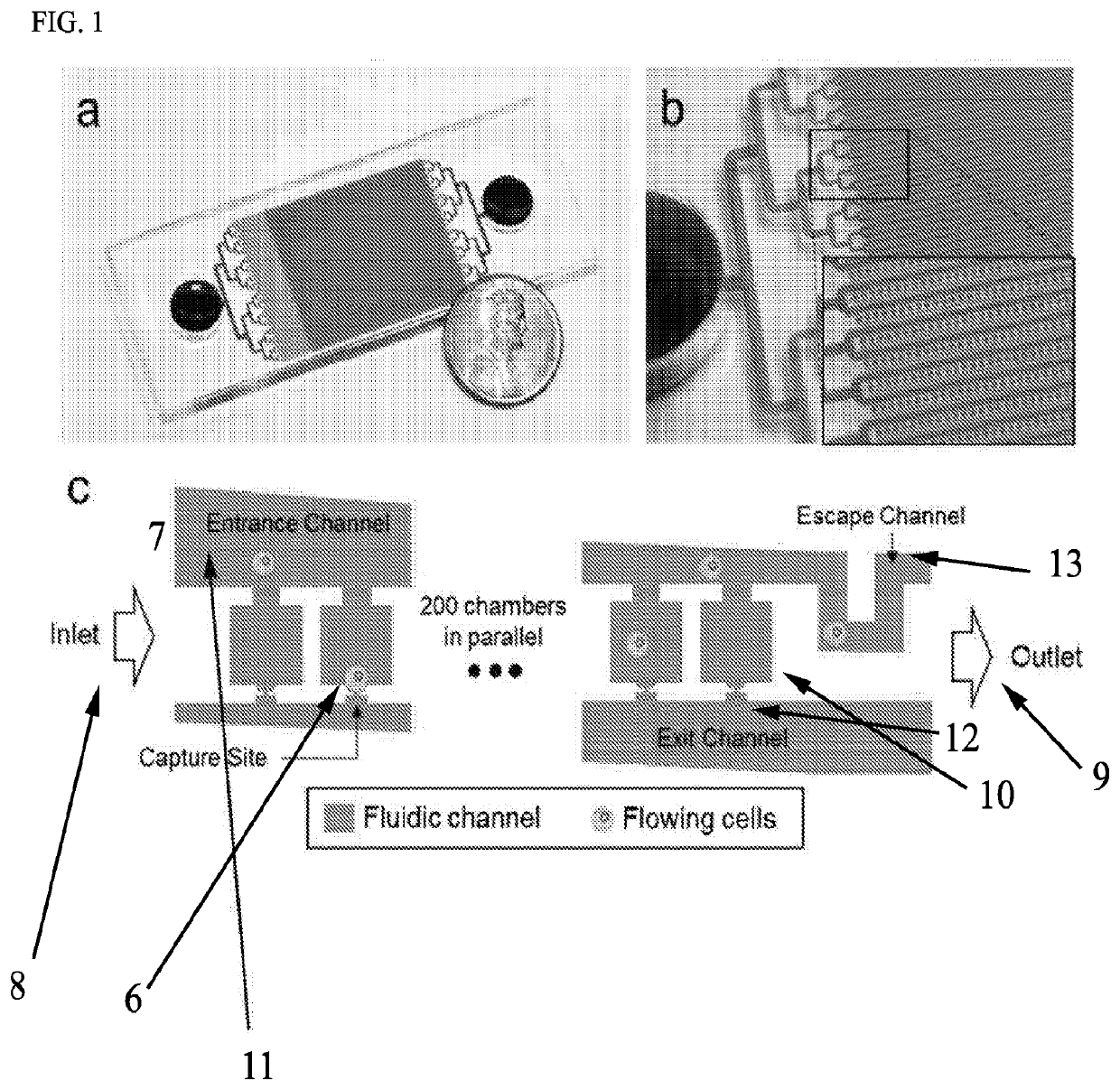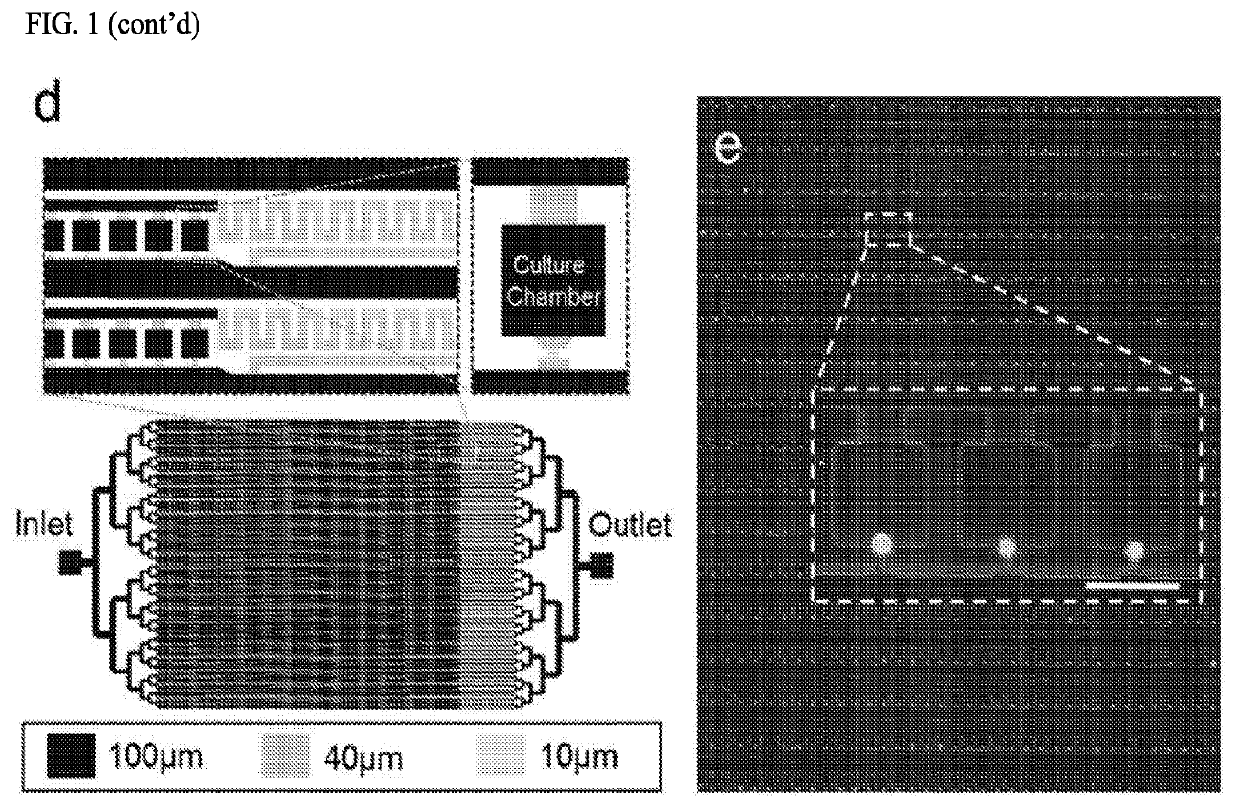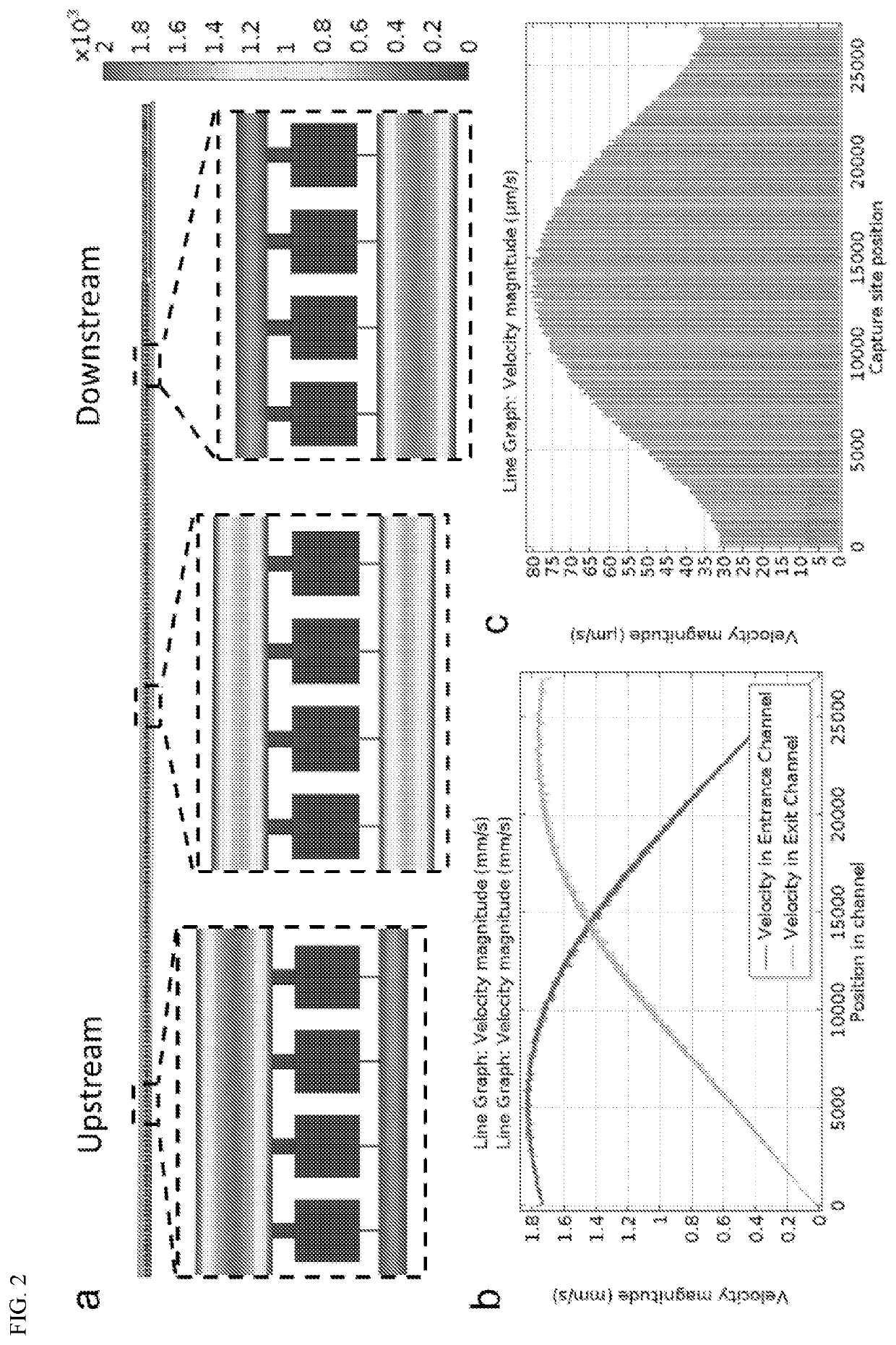Systems and methods for whole cell analysis
a whole cell analysis and system technology, applied in the field of systems and methods for whole cell analysis, can solve the problems of limiting the assay throughput, reducing the flow rate of reagents, and laborious isolation of cells in each tube, and achieve the effect of reducing the flow rate and high flow ra
- Summary
- Abstract
- Description
- Claims
- Application Information
AI Technical Summary
Benefits of technology
Problems solved by technology
Method used
Image
Examples
example 1
Design of the Highly Parallel Channel Structure for Throughput Scaling
[0105]Single-cells are captured in micro-wells when they flow into the micro-wells and block the capture site. To increase the throughput, it was found that duplication of identical micro-wells into a larger array will suffer from low cell capture rate and clogging caused by non-uniformity of cell distribution between the upstream and downstream. To overcome this challenge, the scaling of the chip is achieved by engineering in two aspects. First, it was investigated how to increase more cell capture wells in each branch channel. Second, the throughput was scaled up by parallelizing the branch channels. A branch channel of 12,800-well chip is shown in FIG. 1 (c). In one design, each branch channel comprises an entrance channel and an exit channel with 200 micro-wells connected in parallel between them. After the entrance channel, a 40 μm high escape channel was added to release residual cells in the entrance channe...
example 2
Methods
Device Fabrication
[0131]The devices were made using soft-lithography fabrication process. The multi-layer layout of the chip was designed using AutoCAD 2016 (Autodesk®). The masks for photolithography were made using a mask making instrument (μPG 101, Heidelberg instruments). The mold for the flow channel was fabricated with 10 μm, 20 μm, 40 μm, and 100 μm thick SU-8 (Microchem) following the manufacturer's protocol. The valves were created using AZ®9260 (AZ Electronic Materials) with peak thickness of 15 μm and 45 μm after thermal reflow. The mold for the control channels was fabricated with 20 μm SU-8. The SU-8 mold was treated by vaporized Trichloro(1H,1H,2H,2H-perfluorooctyl) silane (448931 ALDRICH) under vacuum overnight to promote the release of cured PDMS. After coating, the mold was heated at 150° C. on a hot plate for 10 minutes. PDMS (Sylgard 184, Dow Corning) was prepared by mixing with 10 (elastomer): 1 (curing agent) (w / w) ratio, poured on flow channel molds, and...
PUM
 Login to View More
Login to View More Abstract
Description
Claims
Application Information
 Login to View More
Login to View More - R&D
- Intellectual Property
- Life Sciences
- Materials
- Tech Scout
- Unparalleled Data Quality
- Higher Quality Content
- 60% Fewer Hallucinations
Browse by: Latest US Patents, China's latest patents, Technical Efficacy Thesaurus, Application Domain, Technology Topic, Popular Technical Reports.
© 2025 PatSnap. All rights reserved.Legal|Privacy policy|Modern Slavery Act Transparency Statement|Sitemap|About US| Contact US: help@patsnap.com



